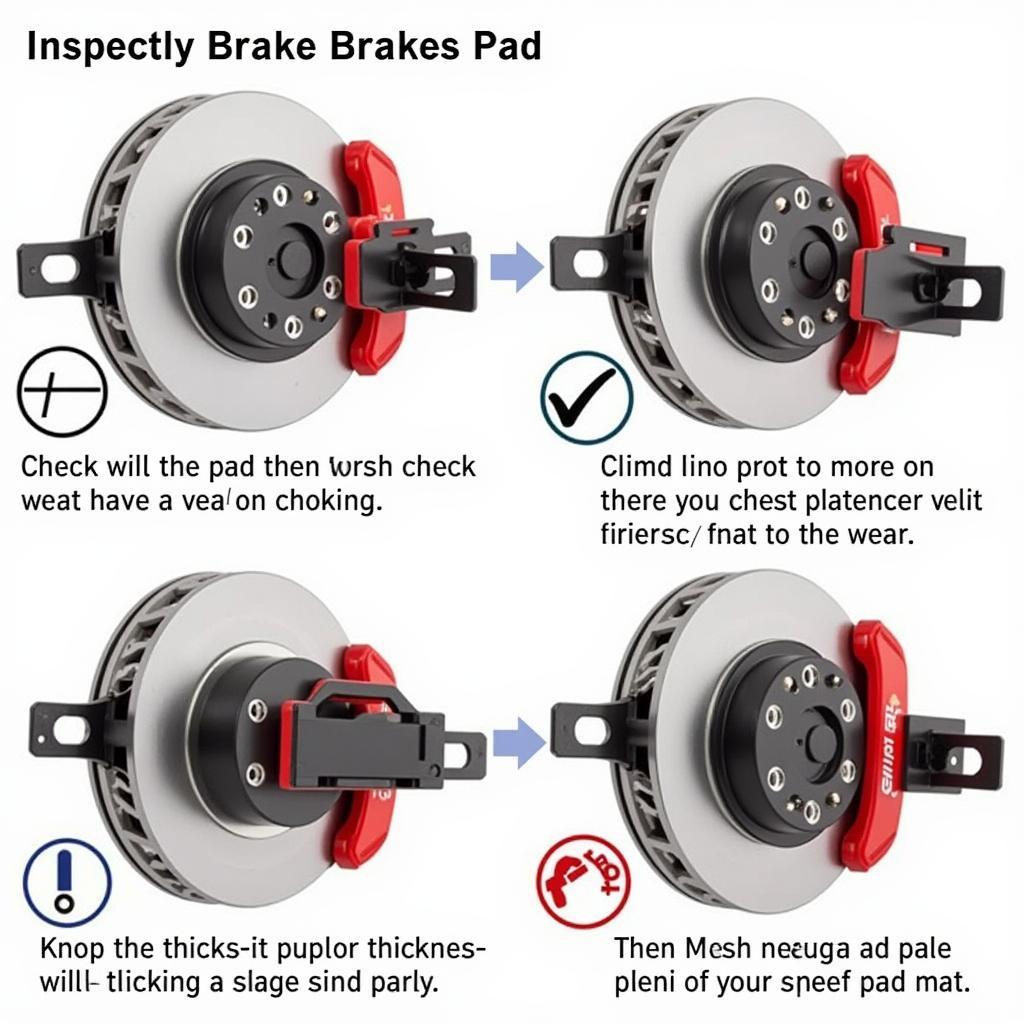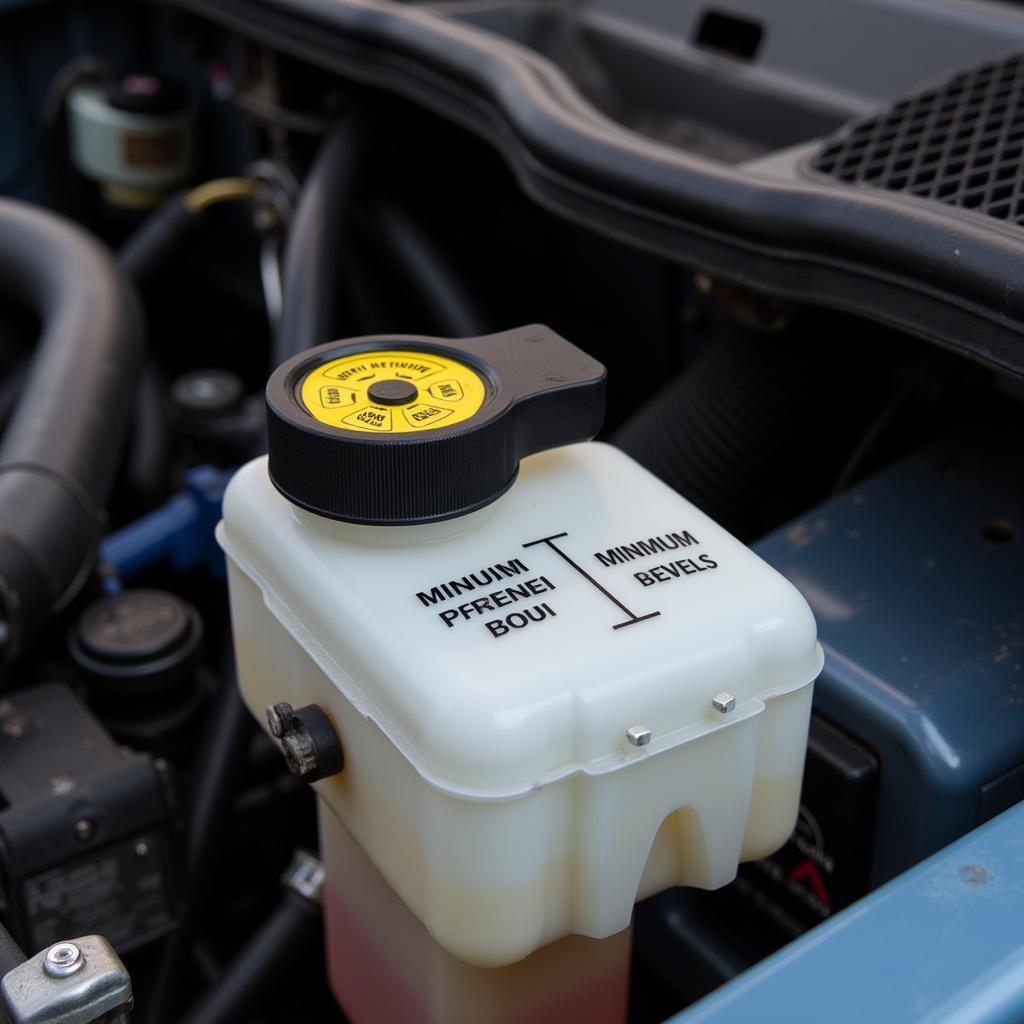The dreaded brake warning light on your Honda S2000 dashboard can be a source of anxiety. Understanding what triggers these lights and how to address them is crucial for maintaining your S2000’s safety and performance. This comprehensive guide will delve into the common causes of Honda S2000 brake warning lights, providing you with the knowledge and steps needed to troubleshoot and resolve the issue.
Decoding Your Honda S2000’s Brake Warning Lights
There are several different brake-related warning lights that can illuminate on your S2000’s dashboard. Each light signifies a different potential problem. The most common are the ABS (Anti-lock Braking System) light and the regular brake system warning light. The ABS light indicates a potential issue with the anti-lock braking system, while the brake system warning light usually points to problems with the core braking system, such as low brake fluid or worn brake pads. Understanding which light is on is the first step in diagnosing the problem. Sometimes, both lights may illuminate simultaneously, suggesting a more complex issue.
Common Causes of Honda S2000 Brake Warning Lights
Low brake fluid is often the most common culprit. Check the brake fluid reservoir level. If it’s low, add the correct type of brake fluid as specified in your owner’s manual. Worn brake pads are another frequent cause. As your brake pads wear down, they trigger a sensor that activates the warning light. A faulty ABS sensor can also trigger the ABS warning light. These sensors monitor wheel speed and are crucial for the proper functioning of the anti-lock braking system. Finally, a malfunctioning ABS module can cause issues with the entire system.
Troubleshooting Honda S2000 Brake Warning Lights
Start with the simplest checks first. Inspect your brake fluid level. If it’s low, top it off and see if the light goes off. Next, visually inspect your brake pads for wear. If they appear thin, it’s time for a replacement. If these initial checks don’t resolve the issue, more advanced diagnostics may be required. This could involve scanning the car’s computer for error codes related to the ABS system or using specialized tools to test the ABS sensors and module.
What if the brake light flashes?
A flashing brake light often indicates a more serious problem and requires immediate attention. This could signal a critical issue with the hydraulic system or the ABS module.
Can I drive with the ABS light on?
While you can technically drive with the ABS light on, your anti-lock braking system will likely be disabled. This means you’ll need to be extra cautious, especially in slippery conditions.
How much does it cost to fix Honda S2000 brake warning lights?
The cost to fix brake warning lights can vary greatly depending on the underlying cause. A simple brake fluid top-off is inexpensive, while replacing the ABS module can be significantly more costly.
“Regular maintenance, including brake inspections, is key to preventing brake-related issues on your S2000,” advises John Carter, a seasoned automotive technician with over 20 years of experience specializing in Honda vehicles.
 Inspecting Brake Pads on a Honda S2000
Inspecting Brake Pads on a Honda S2000
Remote Diagnostics and Programming for Honda S2000 Brake Issues
In some cases, remote diagnostics and programming can be utilized to diagnose and address certain brake-related issues in your Honda S2000. This cutting-edge technology allows skilled technicians to access your vehicle’s computer system remotely, scan for error codes, and even perform software updates or recalibrations. This can be a convenient and efficient way to resolve certain problems without needing to physically take your car to a repair shop. However, not all brake issues can be addressed remotely, and physical inspection and repair may still be necessary in some situations. “Remote diagnostics are a powerful tool for quickly identifying and addressing certain electronic issues within the braking system, but a hands-on approach is often still necessary for mechanical repairs,” adds Sarah Miller, an expert in remote automotive diagnostics and programming.
Conclusion
Addressing honda s2000 brake warning lights promptly is vital for your safety. By understanding the different warning lights, common causes, and troubleshooting steps, you can maintain your S2000’s braking system in optimal condition and ensure a safe driving experience. Remember to consult your owner’s manual for specific information regarding your vehicle and always seek professional help if you are unsure about any aspect of brake repair.
FAQ
-
What does the Honda S2000 ABS light mean? It indicates a problem with the Anti-lock Braking System.
-
Why is my Honda S2000 brake light on? Possible causes include low brake fluid, worn brake pads, or a faulty ABS sensor.
-
Can I drive my Honda S2000 with the brake light on? Driving is possible but not recommended, especially with a flashing light.
-
How do I check my Honda S2000 brake fluid? Locate the brake fluid reservoir and check the fluid level against the minimum and maximum markings.
-
How do I reset my Honda S2000 brake light? Addressing the underlying issue, such as adding brake fluid or replacing brake pads, typically resets the light.
-
What are the common causes of honda s2000 brake warning lights? Low brake fluid, worn brake pads, faulty ABS sensors, and a malfunctioning ABS module are common culprits.
-
How can remote diagnostics help with honda s2000 brake warning lights? It allows technicians to remotely scan for error codes, perform software updates, and sometimes resolve issues without physical access to the vehicle.

